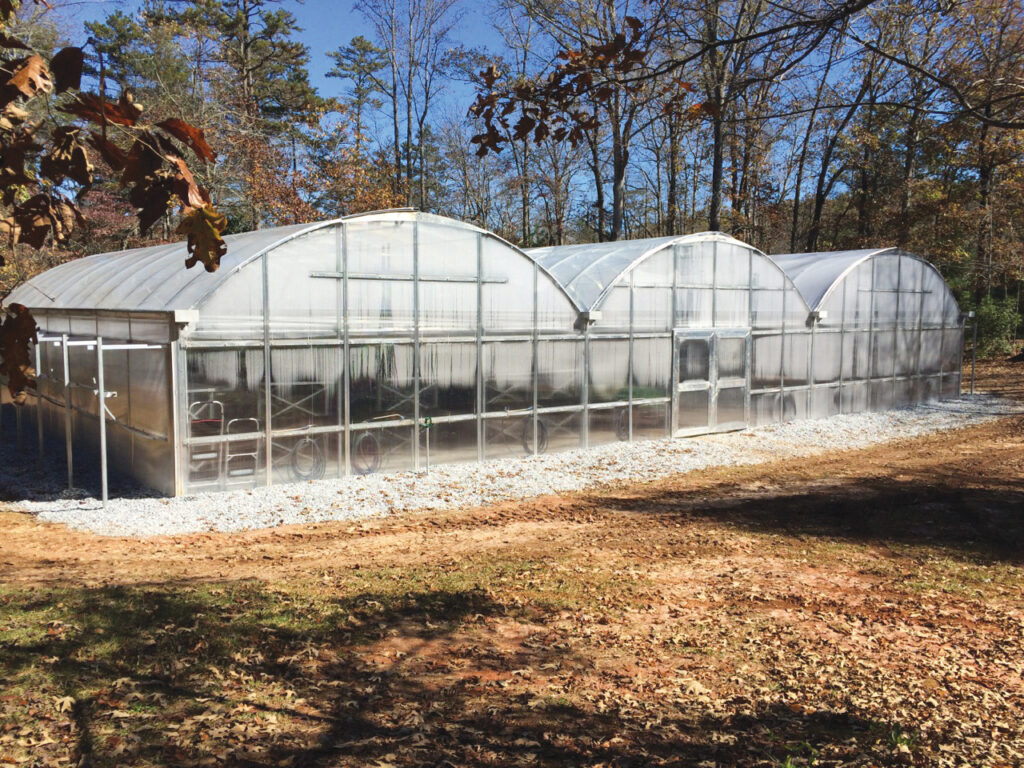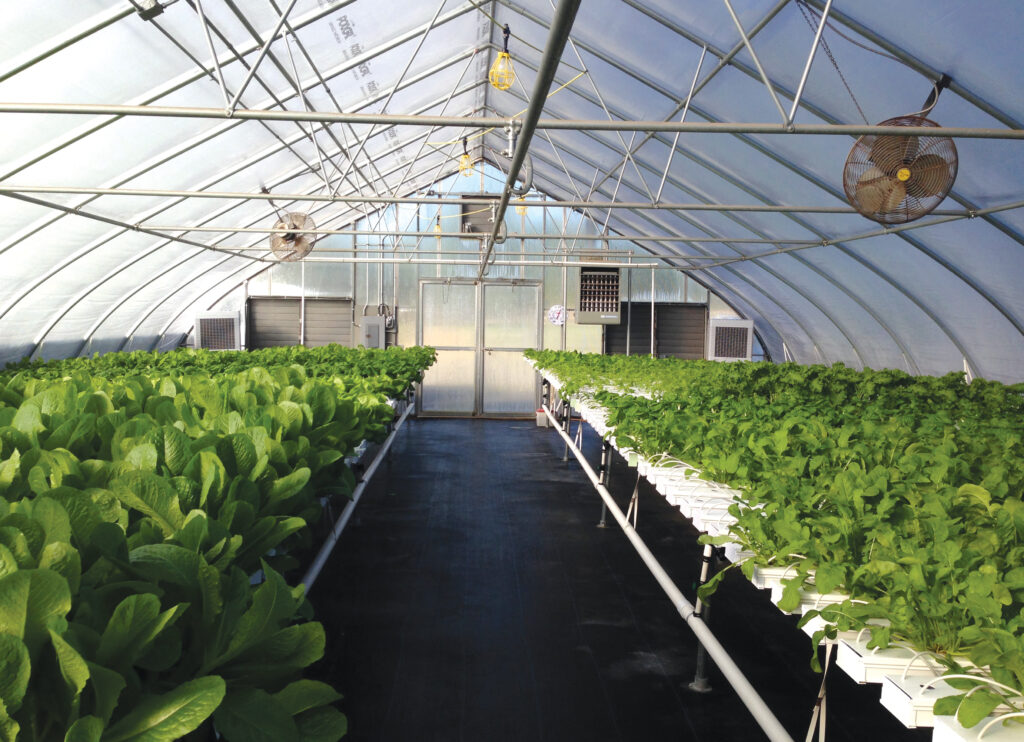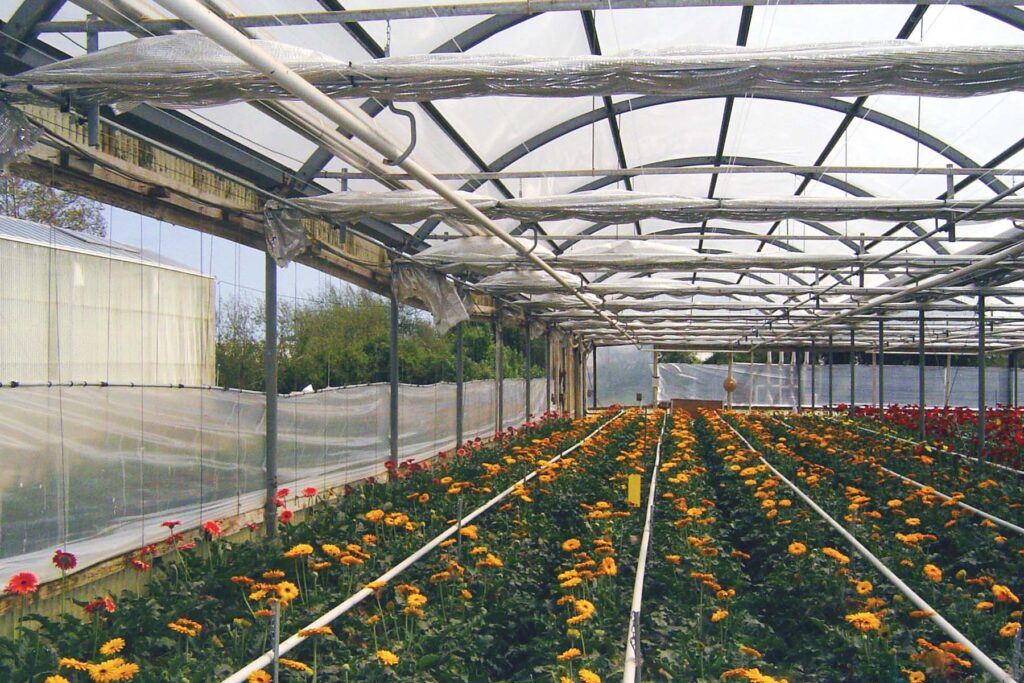Greenhouse Insulation: Here’s What You Need To Know To Operate Your Greenhouse In WInter
What’s the most important part of growing in a greenhouse in winter? Sure, having an efficient, properly sized heating system is crucial, but that isn’t enough on its own for commercial growers looking to maximize profits.
In addition to reliable heat sources, northern operations also need to ensure their structure is capable of retaining the heat that they’re producing. Otherwise, their greenhouse won’t be able to maintain a stable growing environment year-round, and they run the risk of dramatically inflating utility costs.
To boost crop quality, while also limiting energy consumption, cold-climate growers have to bolster their greenhouse insulation. Depending on the operation, this could mean replacing a structure’s cladding entirely, or simply improving heat retention by installing other insulating materials.
No matter the scenario, getting the most potential out of a greenhouse in winter requires deliberate planning from growers. By employing the right components, operations can go beyond their traditional winter crops and produce out-of-seasons plants that offer the highest profit potential.
DO GREENHOUSES STAY WARM IN WINTER?
Yes, greenhouses do a great job of maintaining uniform temperatures during the winter months, as long as growers prepare their structure with greenhouse insulation. This way, the warmth generated by their heating system and the heat absorbed from the sun stay trapped inside, and operations can manipulate the growing environment to their desired temperature range.
Greenhouse insulation starts with a grower’s choice of cladding. After implementing a high R-value material, northern operations can keep production running seamlessly through every growing season, gaining additional harvests and improving their bottom line.

EFFECTIVE CLADDING OPTIONS FOR A GREENHOUSE IN WINTER
Air is one of the most effective insulators, and many of the best cladding options incorporate it into their design to improve R-value. These types of cladding feature a double glazing, or two layers of material, which work together to enhance greenhouse insulation.
Twin-Wall Polycarbonate
For northern growers that want to operate their greenhouse in winter using the highest R-value possible, twin-wall polycarbonate offers one of the most prominent solutions. This thicker, virtually unbreakable material can improve greenhouse insulation, while still providing light diffusion and UV protection that allows plants to realize the full benefits of natural sunlight.
The spaces between the two layers of polycarbonate trap air, producing air pockets that help prevent heat from escaping. Depending on budget or the severity of their climate, growers can choose between 4mm, 6mm and 8mm twin-wall polycarbonate. 8mm thickness offers the highest degree of greenhouse insulation with an R-value of 1.72.
Double Poly Film
Compared to a single-layer film, double poly film provides far better greenhouse insulation, as well as reliable tensile strength and durability. It also gives plants access to a similar light transmission level of around 90 percent.
Double poly film uses air to create a well-insulated structure at a fraction of the cost of other cladding options. With a small compressor, growers inflate the space between the two layers of film, where air is captured to create a buffer between a greenhouse’s interior and the outdoors. The resulting R-value for a greenhouse in winter can reach as high as 1.5.

Sign Up Now To Learn More
SUPPLEMENTAL GREENHOUSE INSULATION
While double-layered cladding can be a great tool for improving greenhouse insulation, northern growers will also want to consider installing added protection inside of their greenhouse in winter. From automated greenhouse insulation systems to more economical materials, there are a number of ways growers can make their structure more cold-tolerant.
Bubble Wrap Insulation
Horticultural bubble wrap has become a popular option amongst all types of growers, including those who extend their season with a high tunnel, cold frame or unheated greenhouse. Growers can line the inside of their structure with this clear material to increase heat retention, without having a negative impact on light transmission.
GrowSpan offers TekFoil Clear Bubble Insulation, which is compatible with all types of cladding and can be left up year-round, making it easy to transition from winter into warmer weather. This style of greenhouse insulation can reduce heating costs in a greenhouse in winter by up to 35%, and it also transmits evenly diffused light that helps promote uniform plant growth.
Thermal Insulation Foil
Thermal insulation foil works to reduce radiant heat transfer across open spaces, which is often a large contributor to heat loss during the cold season. Once installed on a greenhouse in winter, GrowSpan’s TekFoil Reflective Insulation traps warm air inside the structure and reduces heat flow by reflectivity. This material is 95% effective and also resists the buildup of any fungus or mildew.
Reflective greenhouse insulation is particularly valuable when installed on the north side of a greenhouse in winter, also known as the cold wall. In northern regions, this side of a structure collects the least amount of light and is the most susceptible to heat loss.

If operations have benches lining their greenhouse walls, the area below the benching can be a major source of heat loss as well. Installing reflective greenhouse insulation on this section of cladding is a great way for operations to increase their structure’s thermal resistance, without interfering with their plants’ access to sunlight.
Heat Retention Curtains
Heating demand will generally spike overnight when temperatures drop, creating a larger workload for an operation’s heating system and increasing energy consumption. Heat retention curtains offer growers a way to combat this and alleviate the strain on their heat source.
Operations can deploy these curtains across the top of their greenhouse in winter and create a thermal barrier that prevents heat from escaping. As the warm air is trapped inside, their heating system will have to run far less, and plants can continue growing safely during even the harshest conditions.
GrowSpan’s heat retention curtains can be completely automated, so operations are able to quickly reinforce their greenhouse insulation as soon as it’s needed. Then, they can retract the curtains just as easily once the sun returns and outdoor temperatures start to rise again.
There are a variety of factors for operations to consider when growing in a greenhouse in winter. Still, reliable heat retention is going to be the driving force behind limiting energy costs and improving crop quality. Once growers have a plan in place for greenhouse insulation, they can rest easy knowing their structure is ready to withstand any cold weather it encounters.
For more information on how to maintain temperatures while you heat your greenhouse in winter, call or REQUEST A QUOTE today.
RElated Articles
Preparing For The Cold: How To WInterize A Greenhouse
Many steps can be taken to prepare a greenhouse for the winter, including cleaning the greenhouse from top to bottom, testing systems’ functionality and ensuring a greenhouse is properly heated and insulated.
Five Reasons Radiant Heating should Be In Your Greenhouse
Radiant heating is a more cost-effective means of heating that provides both plants and growers with a number of benefits.
Optimizing Heating In Your Winter Greenhouse: How To Make Sure Your Greenhouse Heater Doesn't Go TO Waste
There are a number of factors that influence performance in a winter greenhouse, and growers often have to consider the smallest details when they prepare their operation for cold weather.
How To Size A Greenhouse Heating System
Properly sizing a greenhouse heating system is crucial for increasing heating capacity and maintaining the perfect temperatures year-round.

